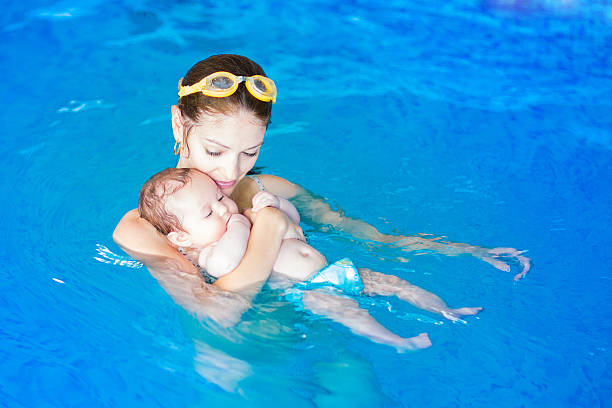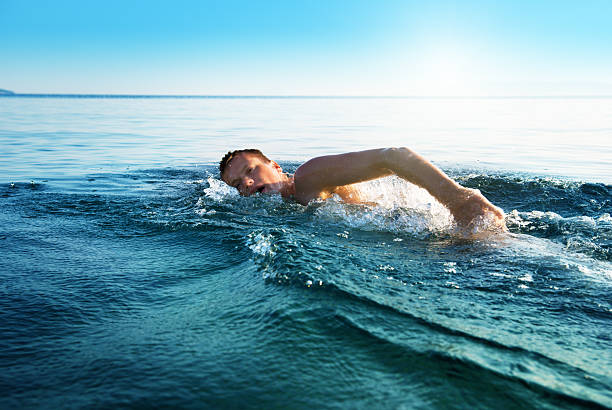Swimming: The Essential Life Skill

Swimming is more than just a recreational activity; it’s a crucial life skill that everyone should learn. The ability to swim not only opens up a world of fun and fitness but also serves as a vital safety measure. Drowning is a leading cause of accidental death worldwide, and knowing how to swim can significantly reduce this risk. This essential life skill empowers individuals with confidence in and around water, whether it’s at the beach, pool, or any aquatic environment.
Lay The Foundation
For parents, laying the foundation for swimming skills in the formative years of their children is invaluable. With the right guidance and approach, parents can introduce their little ones to water in a safe and enjoyable manner. Starting as early as six months, parents can acclimate their children to water, making bath time a playful learning experience. Simple activities like “water on face” and “face in water” can build comfort and confidence, setting the stage for more formal swim lessons later on.
Explore and Enjoy At Home
Creating a positive and supportive environment at home, where children can explore and enjoy water, helps instill a lifelong love for swimming. This early exposure not only prepares them for future swim lessons but also strengthens the parent-child bond through shared experiences. By prioritizing swimming as a life skill, parents equip their children with the tools they need to navigate the world safely and confidently. Dive into this essential journey and make swimming a cornerstone of your child’s development.
Drowning Statistics
Drowning remains a significant public health issue both in the United States and globally. In the U.S., drowning is the leading cause of unintentional injury-related death for children ages 1 to 4, with the Centers for Disease Control and Prevention (CDC) reporting that about 11 people die from drowning every day.
Worldwide, the World Health Organization (WHO) estimates that drowning claims the lives of approximately 236,000 people annually, making it the third leading cause of unintentional injury death globally. These statistics highlight the urgent need for effective drowning prevention strategies, including swimming education and water safety awareness, to reduce these tragic incidents and save lives.
Drowning statistics reveal a stark contrast between children and adults, with children being particularly vulnerable. In the United States, drowning is the leading cause of accidental death for children aged 1-4, with most incidents occurring in home swimming pools. For adults, drowning rates are lower, but incidents often occur in natural water settings such as lakes, rivers, and oceans.
Globally, the World Health Organization reports that children under the age of 15 account for over 40% of drowning deaths, with many occurring in low- and middle-income countries where access to swimming lessons and water safety education is limited. These statistics underscore the importance of targeted prevention efforts and education to protect both children and adults from drowning.
Prevention for Home Pools
Preventing drowning at home pools requires a combination of vigilance, safety measures, and education. First and foremost, installing a secure fence around the pool with a self-latching gate can significantly reduce the risk of unsupervised access by children. It’s crucial to always supervise children closely when they are in or near the water, maintaining constant visual contact.
Removing toys and floats from the pool after use can prevent children from being tempted to reach for them and accidentally falling in. Additionally, teaching children to swim from an early age and educating them about water safety can empower them with the skills and knowledge to stay safe. Pool alarms and covers can provide an extra layer of security, alerting you to any unexpected pool activity. By combining these proactive steps, you can create a safer environment and significantly reduce the risk of drowning in home pools.
Best age to start swim lessons
A good age to start formal swim lessons is typically around 3 to 4 years old. At this age, children are generally developmentally ready to follow instructions and learn basic swimming skills. However, introducing children to water and informal water play can begin much earlier, even as young as 6 months, to help them become comfortable in the water. Early exposure through fun and safe water activities with parents can lay a strong foundation for future swim lessons, making the transition to formal instruction smoother and more effective.
Treading Water
Learning how to tread water as a child is an invaluable skill that not only enhances safety but also builds confidence in aquatic environments. This technique is crucial because it enables individuals to maintain buoyancy and keep their head above water, providing a vital survival skill in emergency situations.
For children, mastering this skill early on can foster a lifelong comfort and proficiency in water, reducing the risk of panic and drowning. However, it’s never too late for adults to learn and benefit from this technique. Regardless of age, adults can develop the strength and endurance needed to tread water effectively, ensuring they are prepared to handle unexpected situations in the water.
By learning to tread water, individuals of all ages can enjoy water activities with greater peace of mind, knowing they possess a fundamental skill that could one day save their life.
Classic Breaststroke
The breaststroke is a classic swimming style characterized by a frog-like kick and simultaneous arm movements that sweep outwards and then inwards, allowing swimmers to glide smoothly through the water. This stroke is not only efficient for forward movement but also essential for keeping the head above water, especially in situations where visibility and breathing are crucial.
Building strength in the arms and legs is vital for maintaining this position, as it ensures that swimmers can sustain the stroke over longer periods without fatigue, enhancing both safety and performance. Interestingly, the same arm and leg movements used in the breaststroke apply to underwater swimming, making it a versatile technique.
By mastering these movements, swimmers can transition seamlessly between surface and underwater swimming, maximizing their efficiency and adaptability in various aquatic environments.

Back Floating
Learning to float on your back is a fundamental skill in swimming that offers safety and relaxation benefits for individuals of all ages. Floating on your back allows you to conserve energy and breathe easily, making it an essential survival technique in water. For children, mastering this skill builds confidence and provides a sense of security, knowing they can rest and call for help if needed.
Adults, too, benefit from the calming and meditative aspects of back floating, which can reduce stress and improve mental well-being. Additionally, floating on your back is a crucial skill for older adults, as it enhances water safety and can be a gentle form of exercise that supports joint health and mobility. Overall, learning to float on your back is a valuable life skill that promotes safety, confidence, and relaxation in aquatic environments.
Swim At any age
Swimming is The Essential Life Skill. Learning to swim can be an enjoyable and rewarding experience at any age, transforming a vital life skill into a delightful adventure. For children, swimming lessons often incorporate playful activities and games that make learning feel like playtime, fostering a love for the water early on.
Adults, too, can find joy in the process by setting personal goals, celebrating small victories, and embracing the social aspect of group classes. The buoyancy of water offers a unique environment where people of all ages can experience a sense of freedom and relaxation, making the learning process both fun and therapeutic. Adults who are non-swimmers, should always have a strong swimmer with them in the water. Seek instructors who have experience with beginner adult swimmers.
Whether it’s the thrill of mastering a new stroke or the simple pleasure of floating effortlessly, swimming provides endless opportunities for enjoyment and personal growth, proving that it’s never too late to dive into the fun.







Share Your Thoughts